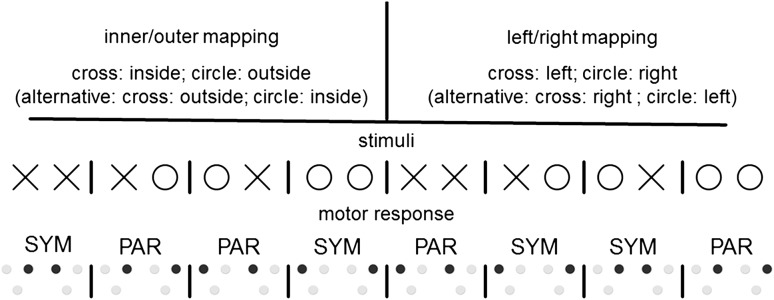Fig. 3.
Schematic depictions of the mapping conditions. The task required motor execution and motor imagery to two of four target locations. Circles and crosses served as stimuli, specifying the target for each hand separately. Participants performed the task in two mapping conditions (inner/outer mapping and left/right mapping). In both mappings two different assignments of stimuli to target buttons are possible (only one of those is illustrated for each mapping). The assignments were counterbalanced between participants. Black dots represent the corresponding target buttons for the response. In each mapping, two stimulus combinations result in symmetric (SYM) and parallel (PAR) movements

